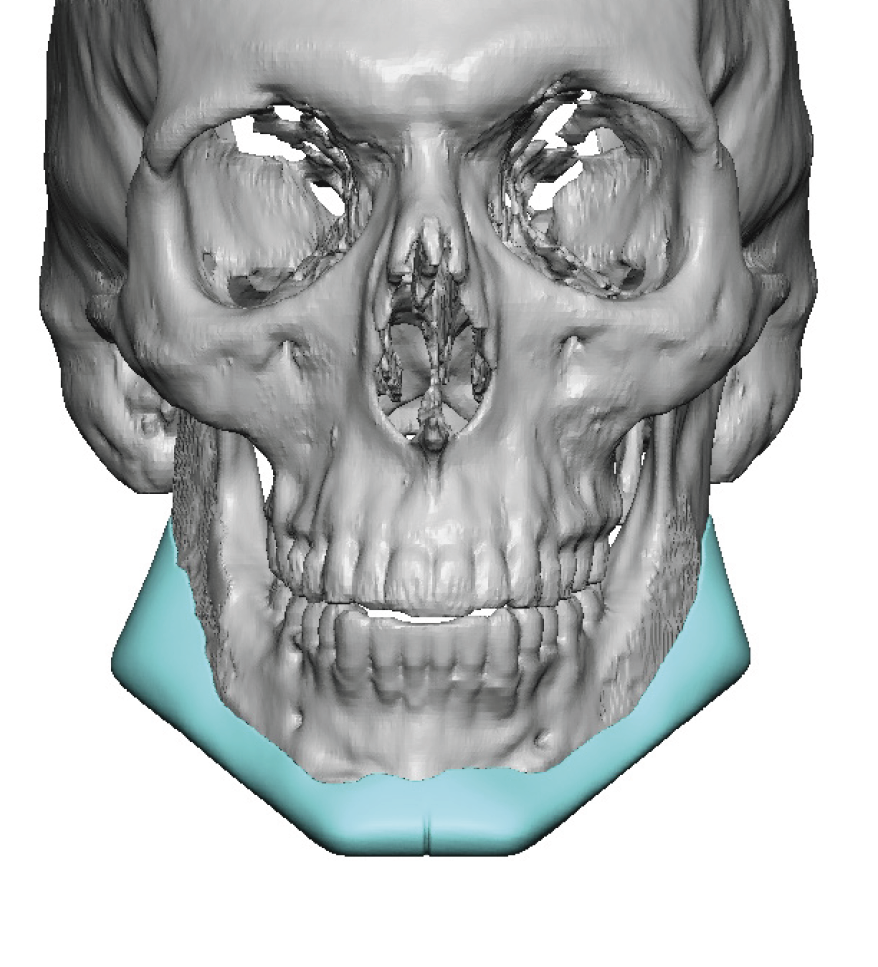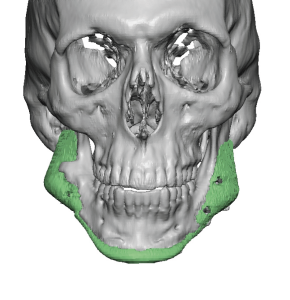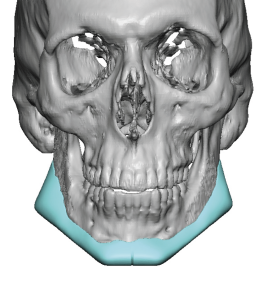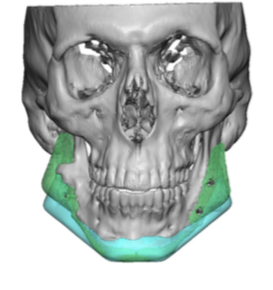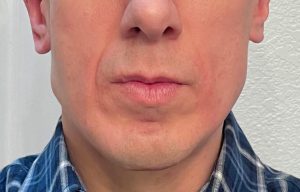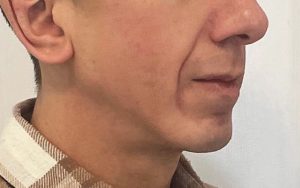Background: Permanent aesthetic jaw augmentation can be done using either standard or custom designed implants. The use of standard chin and jaw angle implants has been around for over three decades and they have the advantages of lower cost and off-the-shelf availability for more immediate surgery. Their disadvantages are their aesthetic limitations with preset implant sizes and the lack of connectivity between the three implants.
Custom jawline implants have the advantages of a pre-established design that its made uniquely for the patient and complete connectivity around the inferolateral border of the entire jawline as a single implant. Its disadvantages are a higher cost than standard implants and, what is not often perceived by patients, is the unpredictability of implant deign to the patient’s desired effect. There is presently no assured way of knowing the exact relationship between design and aesthetic effect. Such custom implant designs remain more an art form than an exact science.
But where custom jawline implants really shine is when they are used as replacements for existing implants. Indwelling chin and jaw angle implants create a known aesthetic cause and effect relationship. The shape and dimensions of the indwelling implants can be learned from a 3D CT scan and their resultant aesthetic benefits are now seen. Thus it is easy to see how designing new implants has a higher chance of a more assured aesthetic result when the previous cause and effect of the implants are known. These aesthetic effects from a new design are more assured…provided the surface area of the jawline being treated is similar between the old vs new jaw implants.
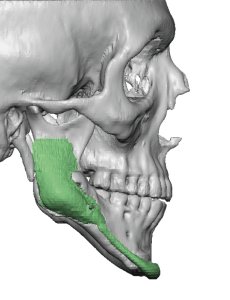
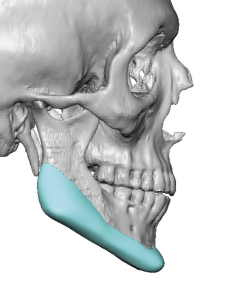
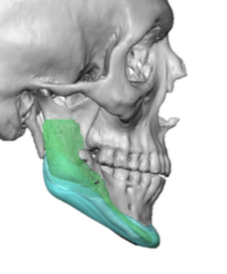
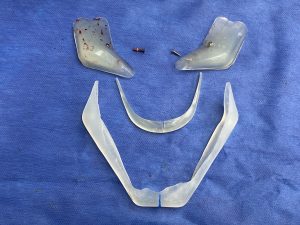
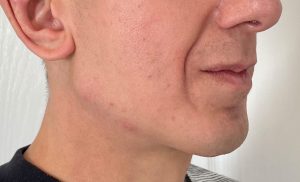
While custom jawline implants can achieve jawline augmentation changes that standard implants can not, they ideally need a frame of reference to do so. That most readily comes when implants are in place with a known aesthetic effect. In essence having a clear understanding of what is wrong makes it easier to know how to make it better.
Case Highlights:
1) Jawline augmentation with the use of standard chin and jaw angle implants has aesthetics limitations such as persistent/enhanced asymmetry, lack of implant connectivity and unachieved aesthetic outcomes.
2) The major advantage of a secondary custom jawline implant is that multiple aesthetic improvements can be achieved by working from the known effects of the standard implants.
3) Custom jawline implant replacements pose greater placement issues due to capsular scar and bony ovegrowths from the first implants.
Dr. Barry Eppley
Indianapolis, Indiana

